Chad DeBolt is the personality behind and founder of Surchability. He’s been heavily involved with online marketing, specifically SEO, for 16 years.
Did you know you can double your organic traffic and improve its value by 538% in one year without adding anything to your website?
No new content, no additional backlink campaigns, nothing.


All you have to do is thin the herd!
If your website has been active (meaning you have been publishing new blog posts regularly) for any length of time, then now would be a great time to do a content audit – or, as I prefer to call it, a content purge.
Now, before you start setting fire to your website, let me explain the theory behind content audits and how to conduct them safely.
Growing up near Atlantic City, I learned that casinos are masterfully designed to keep guests engaged and directed toward high-value areas.
Everything from the layout to the ambient sounds and carpets is strategically planned to create an immersive experience.
At Surchability, we advocate a similar approach for websites: make them inviting to enter and compelling enough to keep visitors engaged for as long as possible.
Imagine your website as a casino and the Google Spider is a high roller, we’ll call him ‘Mr. Big.’
Just as Mr. Big wouldn’t linger in a casino filled with only slot machines and budget buffets, the Google Spider won’t stick around a site cluttered with low-value content.
This is where understanding your ‘crawl budget’—the time Google allocates to crawl your site—becomes crucial.
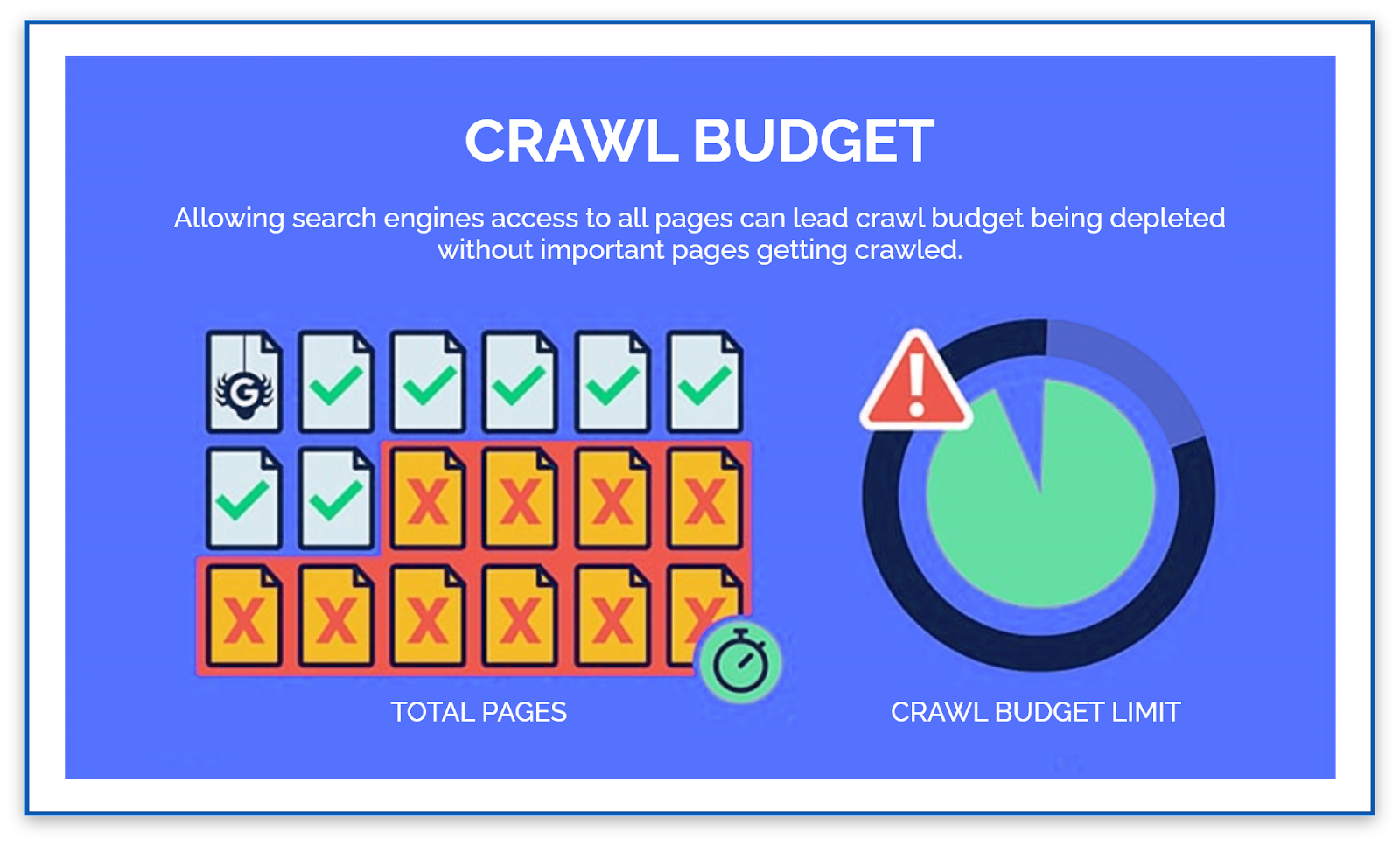
You must value the spider’s time on your website because every second it spends on a low-quality (non-valuable) page, the shorter it will stay next time (and the longer it will take to return).
By optimizing your site’s layout and prioritizing high-quality content, you can ensure that Google spends more time on valuable pages.
By giving Google what it wants, Google rewards you with what you want.
This strategy, which we call the ‘Google Concierge Strategy,’ focuses on making navigation effortless for Google.
The goal is to create your website like a casino that greets high rollers at the door and personally walks them to the highest priority areas.
By streamlining low-value pages on your website and enhancing valuable content, you optimize the time Google Spider spends on your site, leading to better rankings and more traffic.
Now that we’ve discussed Google Spiders and “crawl budget,” let’s look at how to conduct a content audit in a safe manner.
When you are taking an inventory of the content on your site and trying to figure out what to do – you first need to run each piece of content through the following three questions:
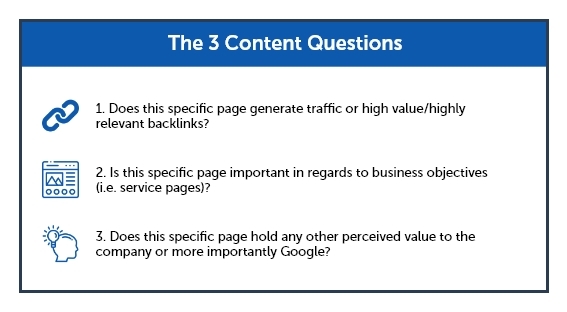
You can then move each piece of content into three possible categories, based on the answers to the three content questions:
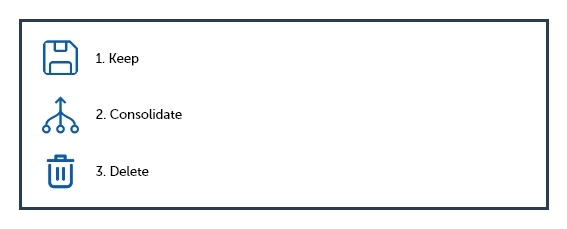
1. Keep:
This step is straightforward and simple to implement. Look at each page in this category to check how well they are performing.
Keep the pages that are doing well and focus your efforts on areas that need more attention.
2. Consolidate:
A large majority of your pages will fall into a gray area – meaning they may generate “some” traffic but nothing to get excited about, or they may have earned one great backlink but not much else.
You don’t want to delete that page, but it isn’t really moving you forward.
In these situations, it’s best to consolidate topically related pages.
We call this the Voltron technique.

If you remember the 80’s cartoon Voltron, you’ll recall how teenagers would pilot mechanical lions that, when combined, formed a super robot capable of overcoming any adversary.
We apply a similar strategy to your content.
By merging topically related pages—our “mechanical lions”—we create a powerful, unified force in your content strategy, enhancing its effectiveness and boosting your site’s performance.
This consolidated approach provides several benefits:
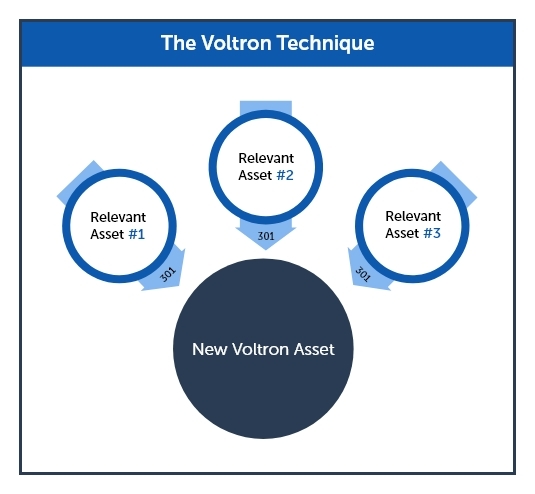
Here are the steps to executing The Voltron Technique:
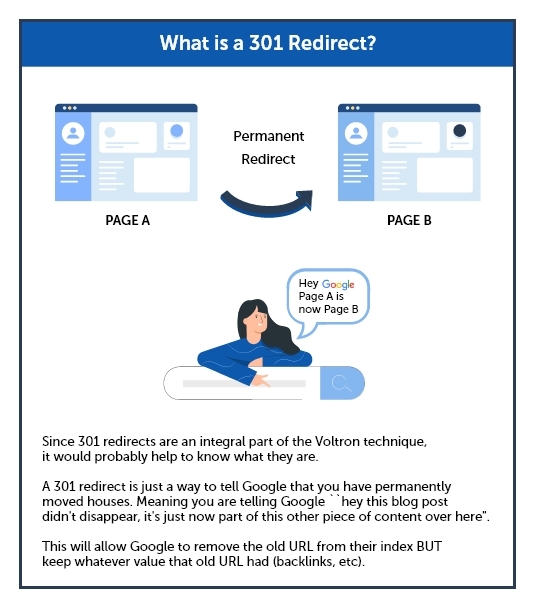
3. Delete:
Now, we’ve come to the final step. Any page on your site that doesn’t fit under Keep or Consolidate, you can essentially delete.
It may look intimidating, so don’t do it all at once (if you have a lot).
You must also redirect deleted URLs to relevant content or the home page using your new 301 skills.
This will eliminate potentially creating a ton of 404 errors for yourself to clean up later.
If you’ve read up to this point, you’ve undoubtedly gained valuable insights into optimizing your website.
The key takeaway here is the significant impact you can achieve by simply evaluating your existing content and removing anything that doesn’t contribute positively to your goals.
Remember, sometimes less is more.
By focusing on quality over quantity and streamlining your content, you can enhance your site’s performance, improve user experience, and boost your SEO efforts effectively.